[Editors note: Higher resolution versions of the photos used in this story are available from the gallery at the bottom of this story.]
‘Colombo isn’t the country’, many election pundits say. It couldn’t be truer. Forget pundits, even cab drivers know it and in the past week several of them have given me useful insights into both the urban pulse, which they are well in tune with, but also the rural pulse, from their hometowns far far away.
Gauging the Sri Lankan electorates’ temperature by the mood in the capital and other urban centres is a fallacy that many known to me are falling prey to. The election will be won or lost in the regions, in the rural hinterland. With just about 10 days to go before the 2010 Presidential Election – an event that will transform the country for better or for worse – this article captures some of the election fever far from the capital Colombo.
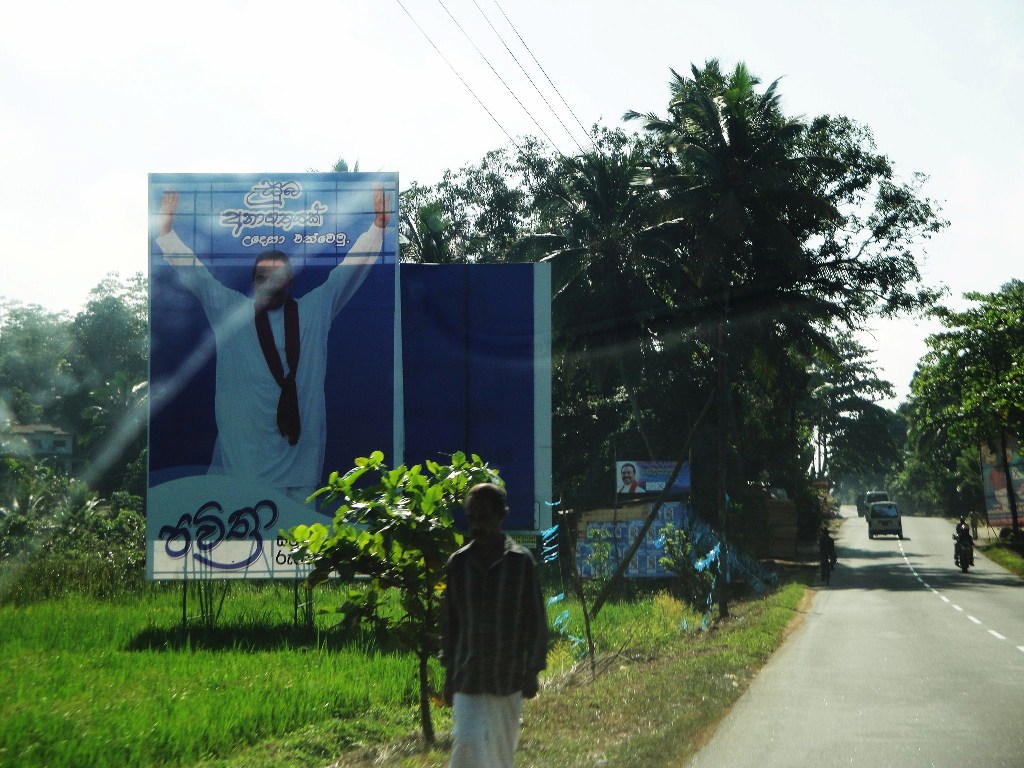
Distracting roadsides. A massive cutout in support of the President, on the Colombo-Ratnapura road, sponsored by MP Pavithra Wanniarachchi of that area. The elections commissioner and the police have failed in stemming the flagrant flouting of basic election laws.
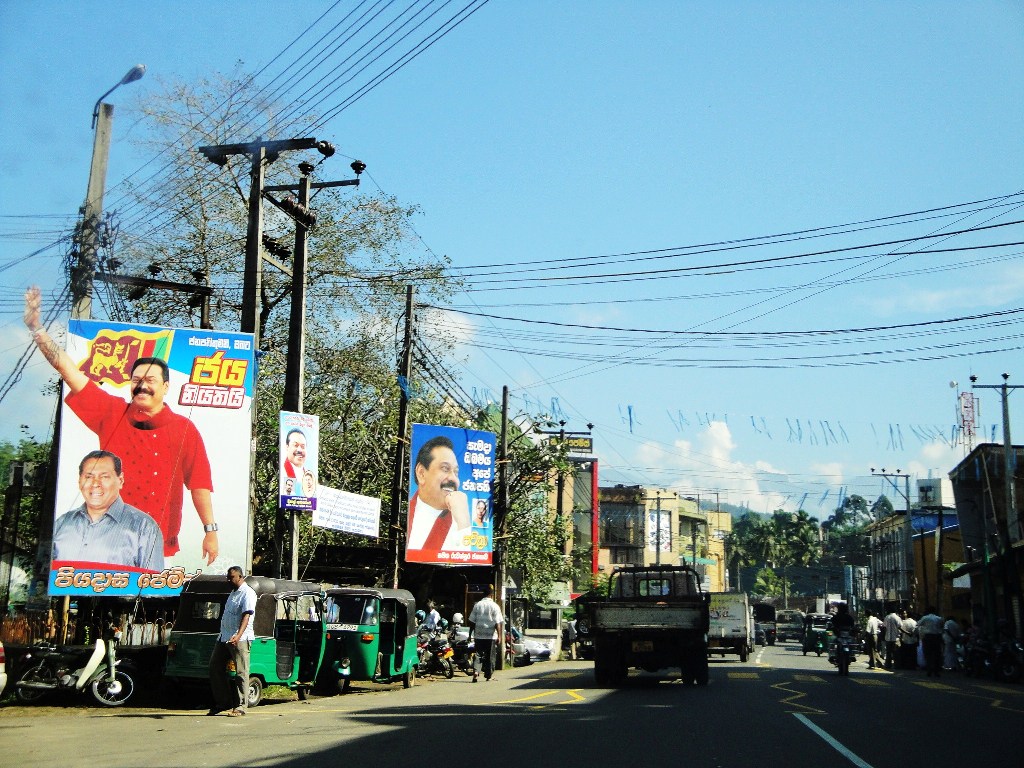
Gemmers for Mahinda. Multiple cutouts and posters in support of the President in Kahawatta, the heartland of the gemming industry. Much of the propaganda material here has been sponsored by local gem businessman.
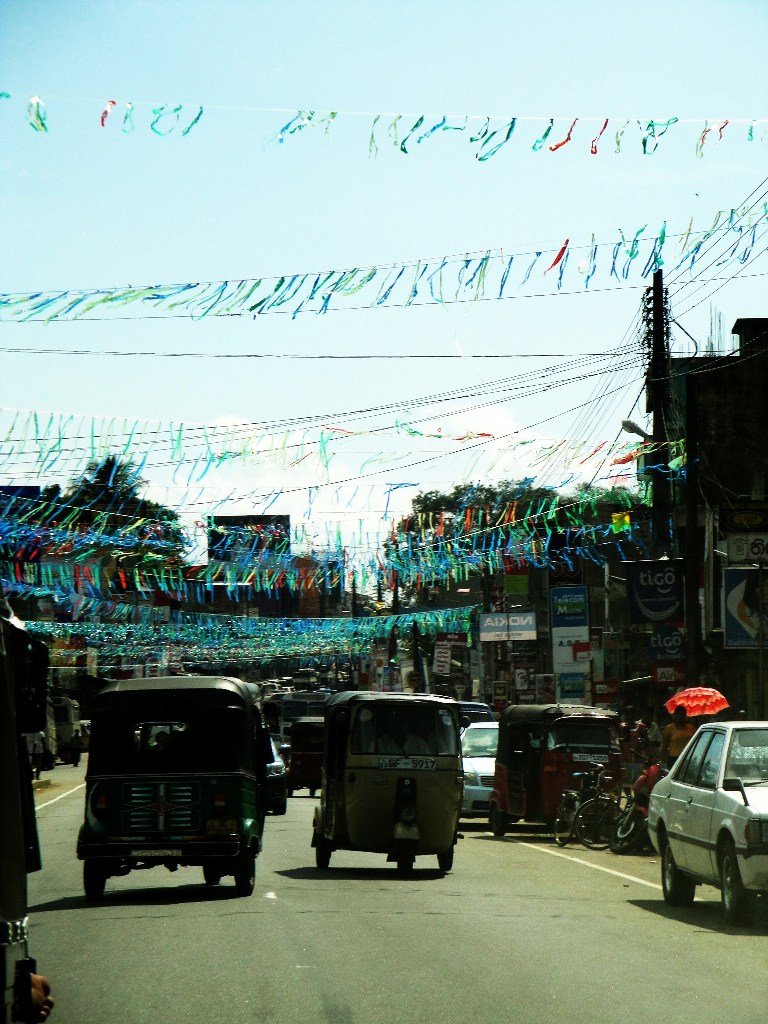
The closest thing to cohabitation. Red, blue and green plastic flags put up for election rallies of both sides intertwine in the main town area of Kahawatta
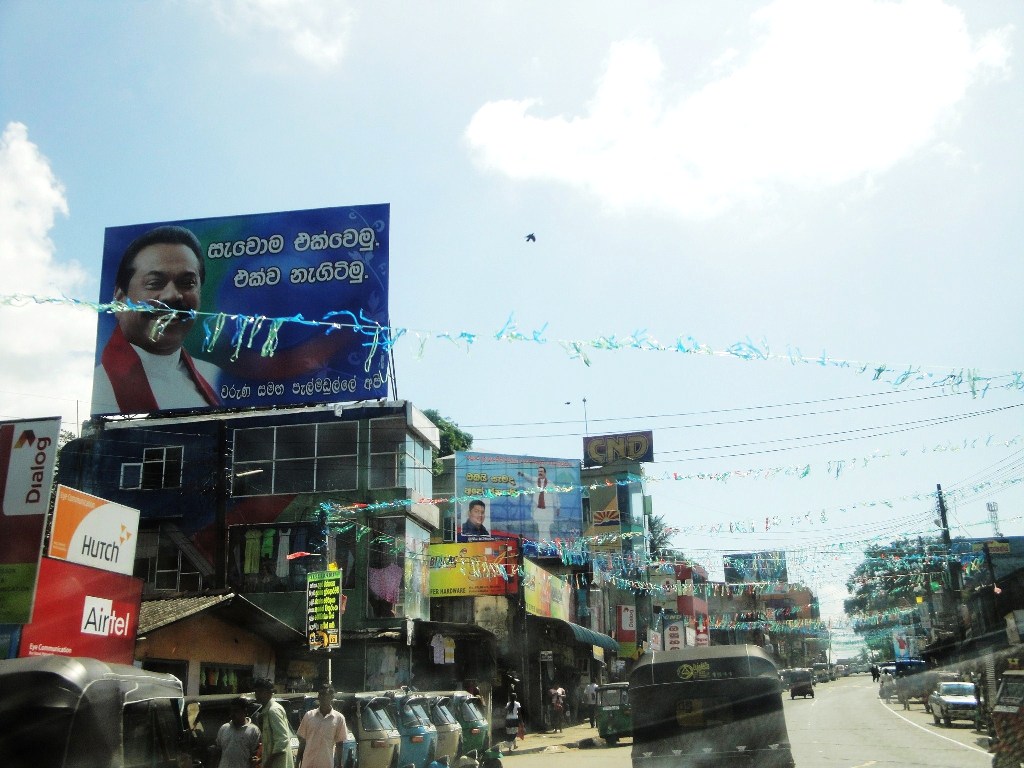
Pelmadulla propaganda. ‘Lets join together and rise up together’, says this election cut out of the President in Pelmadulla on the Colombo-Ratnapura route. Another one atop an office building is seen further down the road.
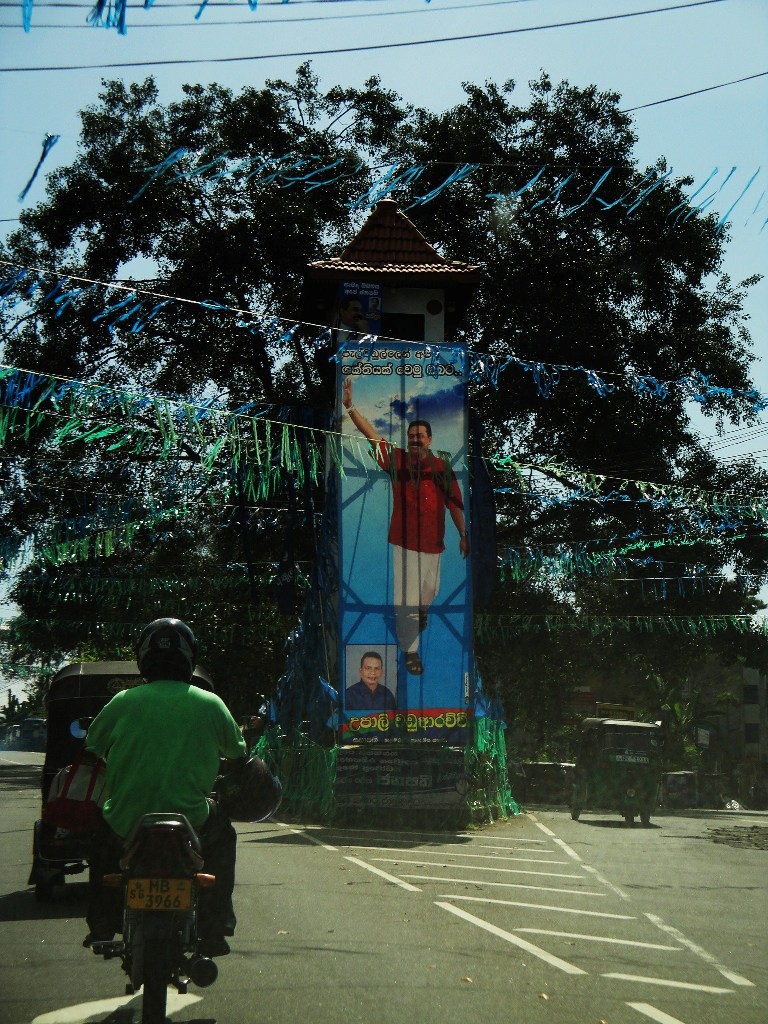
Clocktower cutouts. A massive cutout covering the entire height of the clocktower at the Kahawatte junction, sponsored by local UPFA organiser Upali Waduarachchi.
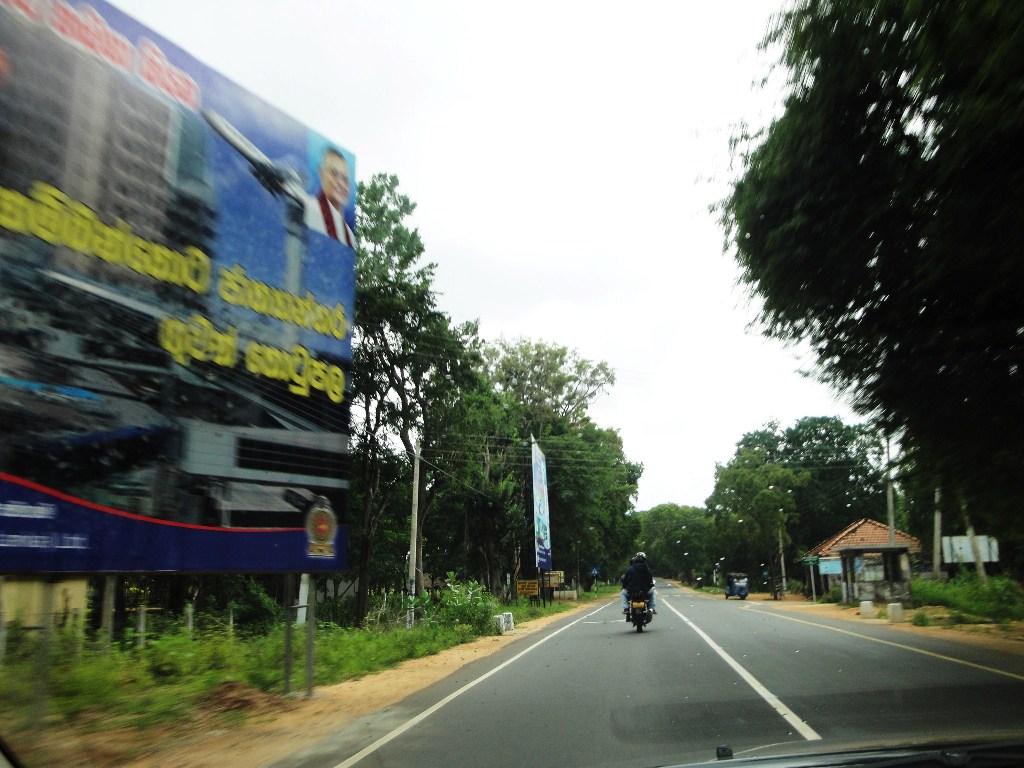
Southern support. This massive government sponsored hoarding on the Thanamalwila road advertises the recently commissioned Hanbantota International Airport. In the inset of the hoarding is a picture of Hon. Chamal Rajapaksa, Minister of Ports and Aviation, and brother of the President.
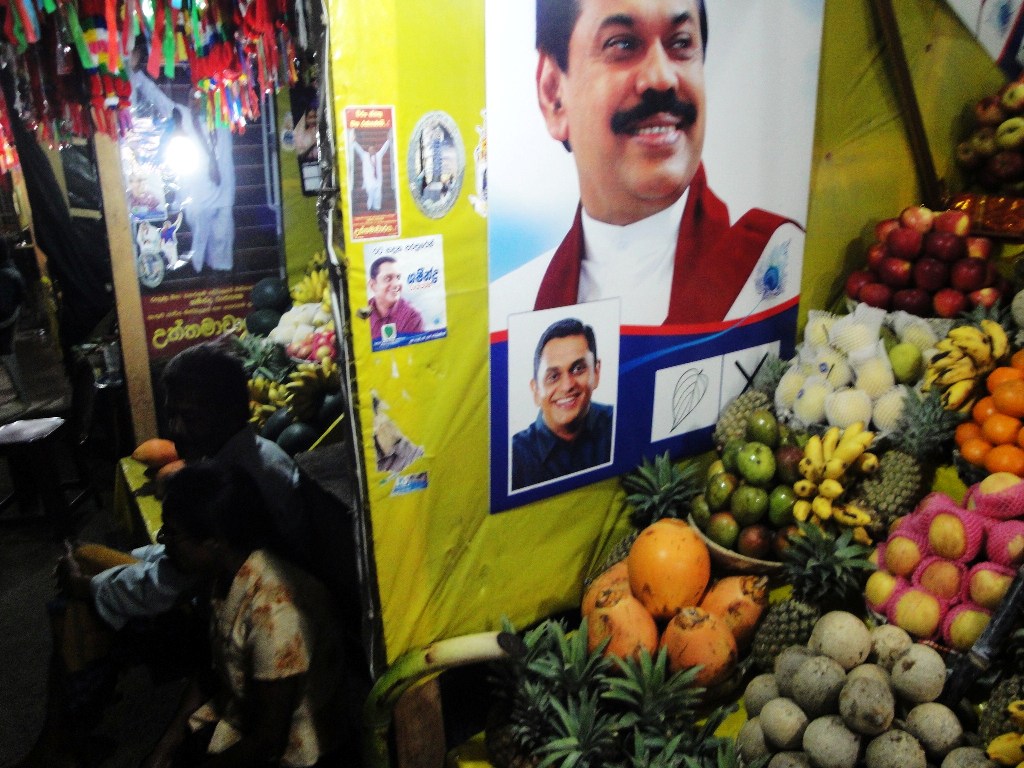
Sacred area sides. A poster of the President in a ‘pooja watti’ vendor’s stall near the main entrance to the Kataragama sacred area. Upto 2006/07 the nearly hundred stalls had framed pictures of the late R. Premadasa, and the owners continued to honour him posthumously for his Gam Udawa project which transformed the local infrastructure of Kataragama. Their allegiance to the UNP is usually unconditional. However late last year, Hon. Dinesh Gunawardena (Minister for Sacred Area Development) had constructed new stalls for many the vendors, and the owners of these new stalls told me unreservedly that this time they will definitely be voting for the incumbent President. Additionally, many of the young sons of these vendors have obtained jobs in the local Civil Defence Force (former Home Guard), earning as much as Rs. 28,000 a month. More than some public service professionals!
In the poster’s inset is Shashindra Rajapaksa, nephew of the President and the Basnayake Nilame of the Kataragama Maha Devale. He is now also the Chief Minister of the Uva Province following the August 2009 Provincial Council elections. Shashindra, the son of Chamal Rajapaksa, was the President’s former Private Secretary and was educated abroad in Business Administration.
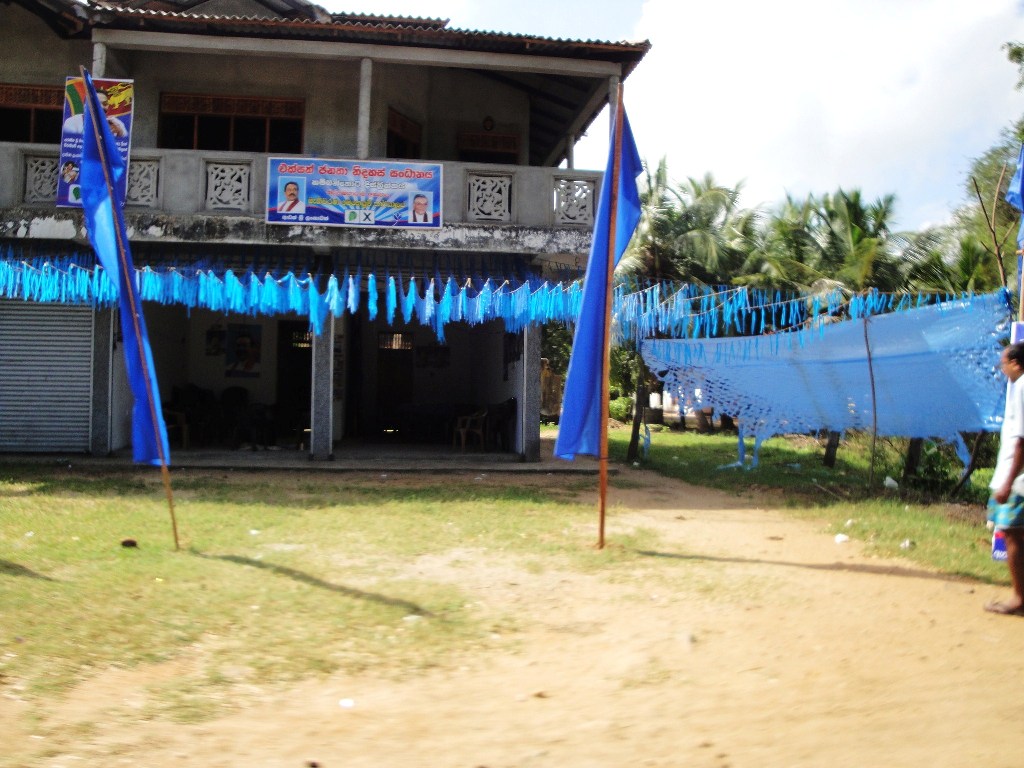
Slow Sunday. An empty UPFA campaign office in Tissamaharama, Southern Sri Lanka. Tissa is a Sinhalese heartland, and stronghold of the JVP. Many JVP strongholds like Tissa delivered a strong turnout for Mahinda Rajapaksa, in his first battle for the Presidency in 2005, when the UPFA and JVP signed an MoU and contested together.
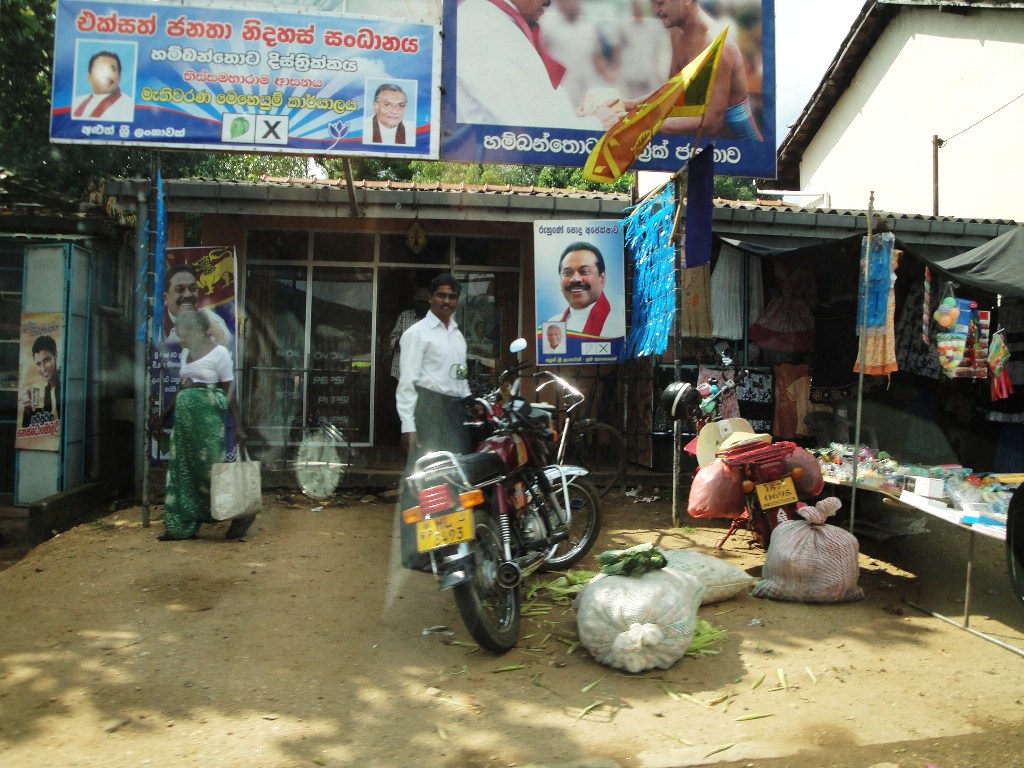
Full on. The presence of election propaganda material for the UPFA campaign is simply overwhelming. You have to strain your eyes to find anything green. Or even red, for that matter. Campaign organisational offices for Gen. Sarath Fonseka are sparse. Cutouts, hoardings and posters are few. Intimidation and violence directed at SF supporters can be largely attributed to this, at least in the areas highlighted here. Taking intimidation to a whole new level, local SF-organisers complain that they are unable to even hire out halls/grounds for meetings, or hire sound equipment, chairs and stages.
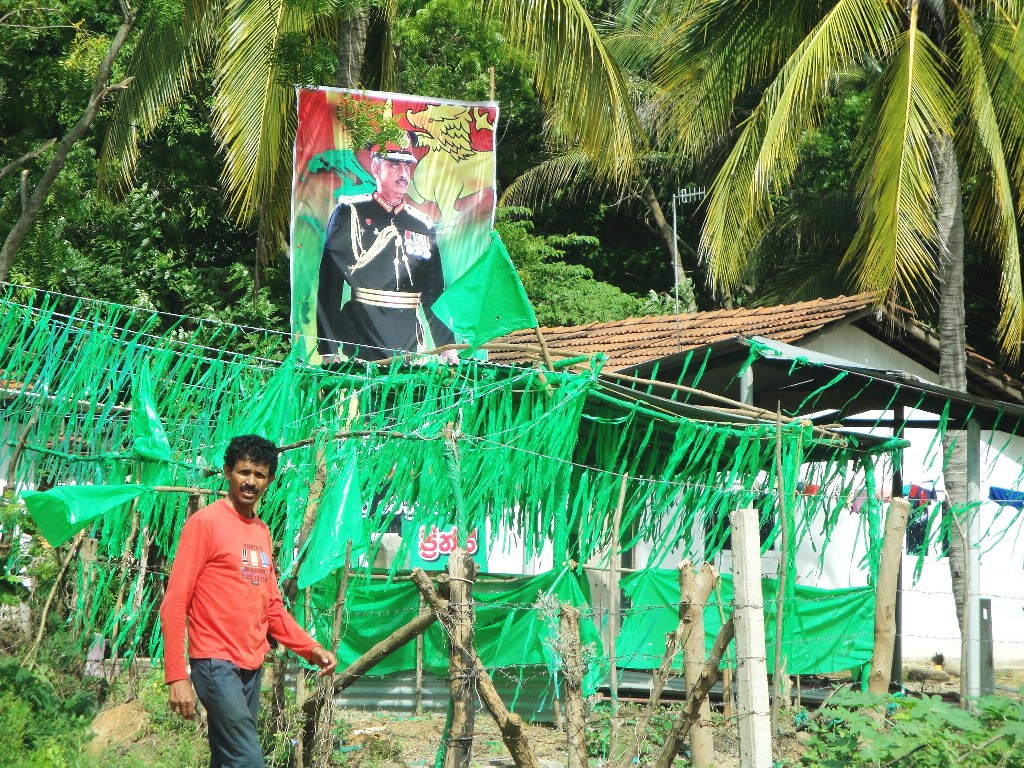
Rare sighting. A man walks past a campaign office of Gen. Sarath Fonseka, between Tissamaharama and Weerawila. During the entire drive from Colombo to Tissa and back, I saw, at most, 5 such offices. I must have seen over 70 for the President. SF’s machinery on the ground appears weak, but nevertheless, his message seems to be propelling him forward. The question remains, is the rural voter interested?
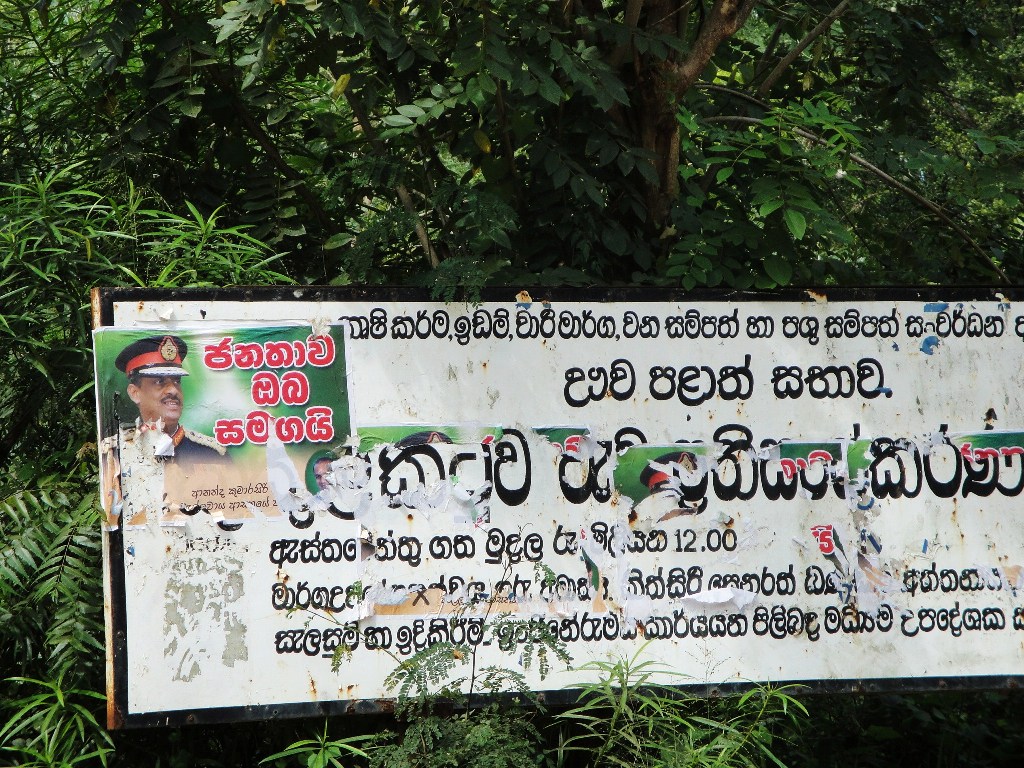
Torn presence. Ripped up posters of Presidential candidate Gen. (Rtd) Sarath Fonseka in his army uniform, near Embilipitiya. The tagline on the poster says ‘The people are with you’ in Sinhala.
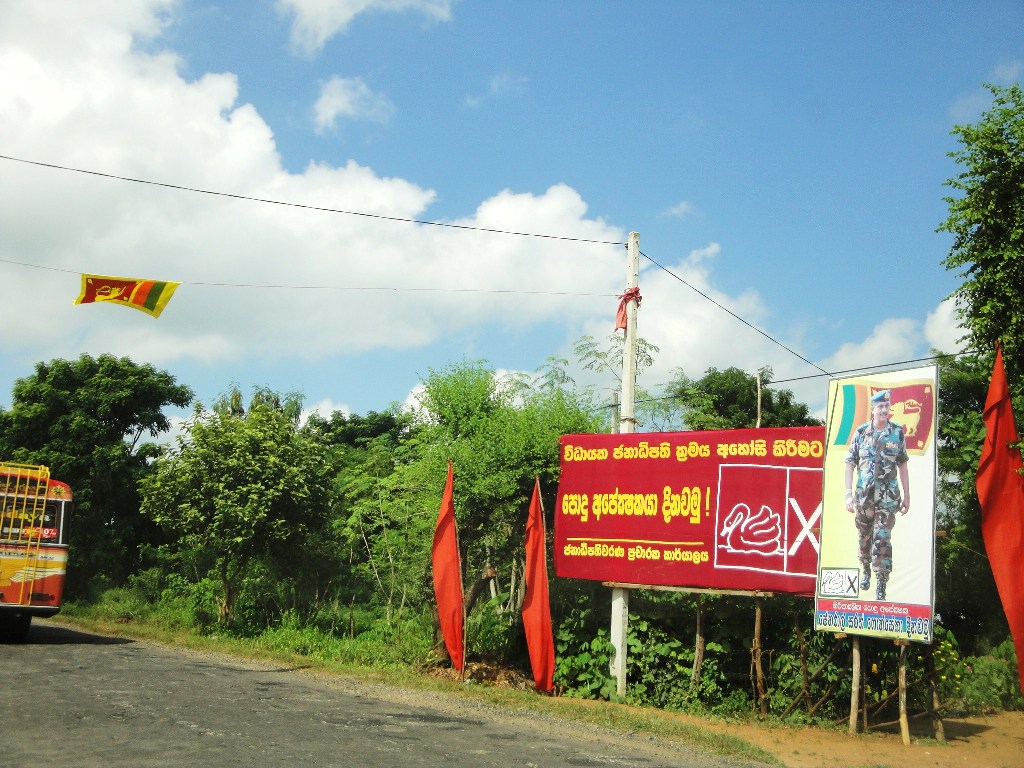
JVP for SF. A campaign office by local JVP supporters for Sarath Fonseka, with a banner in Sinhala saying ‘To abolish the Executive Presidency, lets make the common candidate win!’. The grass roots level campaigning on behalf of SF has been touted as a deciding factor in this election. Will the rural youth rally behind the JVP and support SF? Or is the JVP force in fact a non-factor, and will the youth rally behind the President? Just last week thousands of youth of the National Youth Services Council network, from across the country, were invited to an event at Temple Trees.
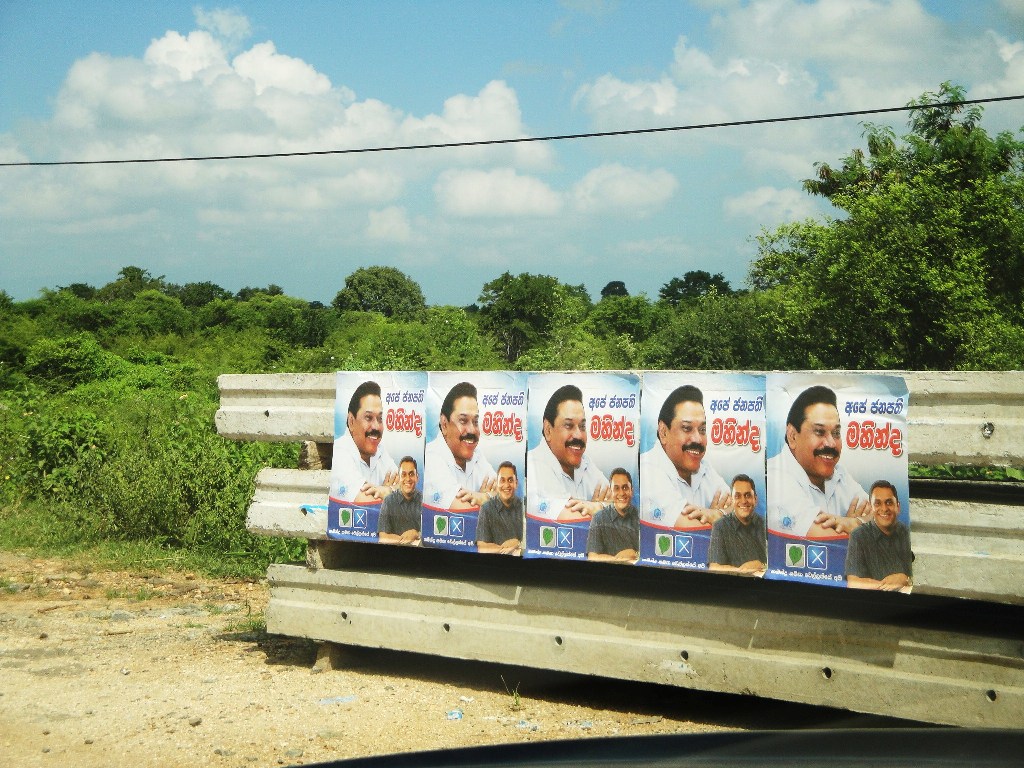
The infrastructure President?. Campaign posters of President Rajapaksa pasted on abandoned telephone poles on the Udawalawe road. One of the main achievements of the present administration being heavily publicised and campaigned upon is the massive investments on public infrastructure. Several new port projects including the Hambantota and the Colombo South ports, widespread rural electrification programmes, rehabilitation of rural roads and construction of new bridges (particularly in the South and East) have been widely hailed as positive developments. However much more needs to be done to propel the country in to the next stage of development. Corruption, graft and a lack of accountability will only slow down urgent investments of this kind.
(All images copyright Anushka Wijesinha 2010)













